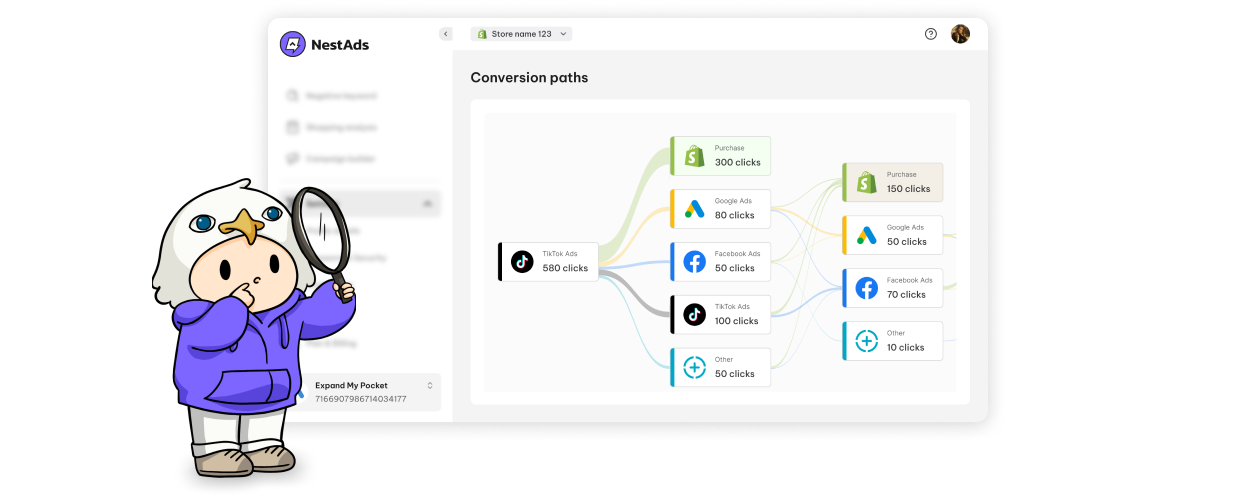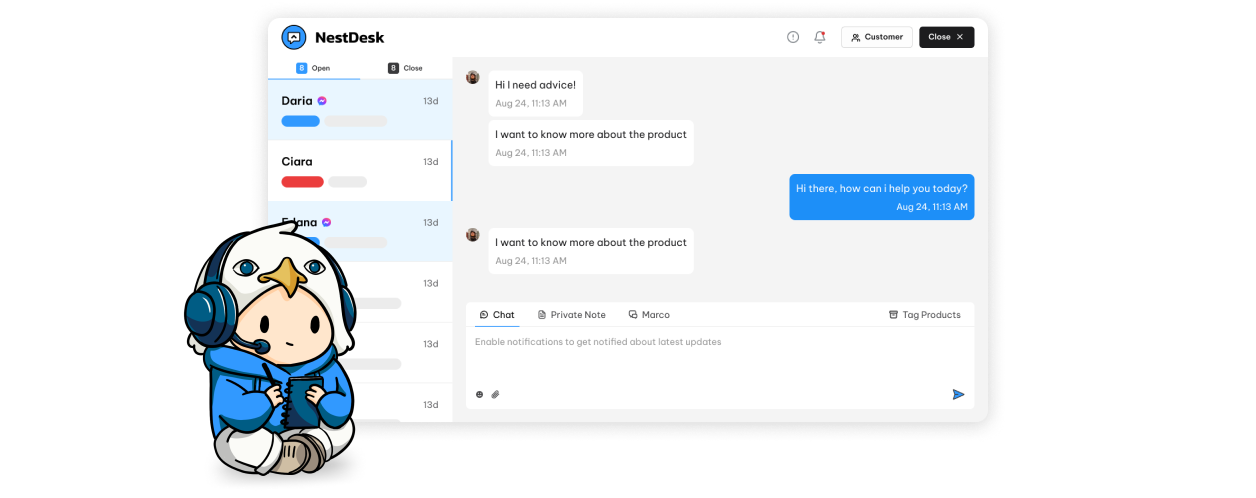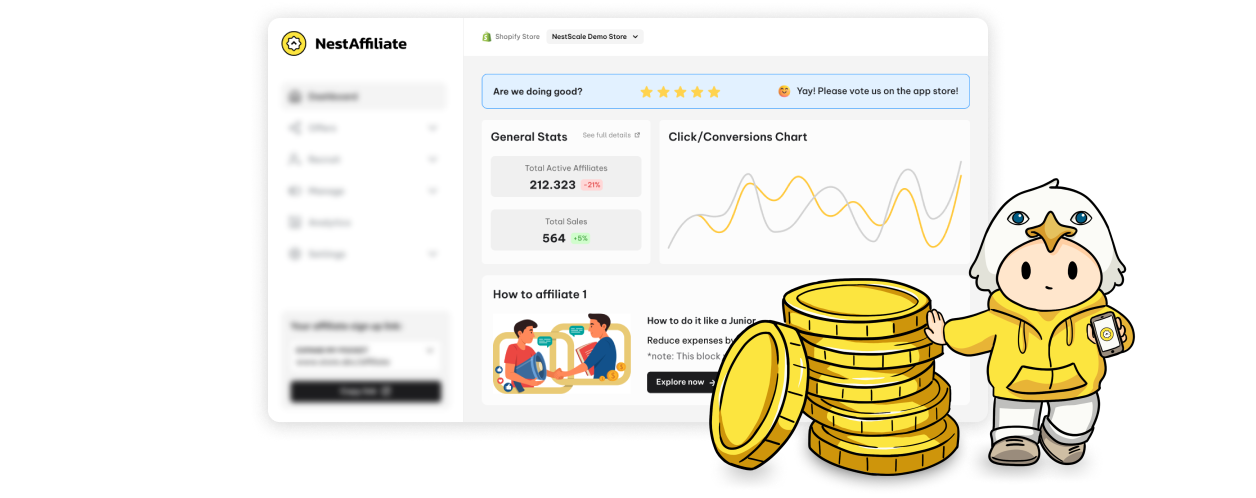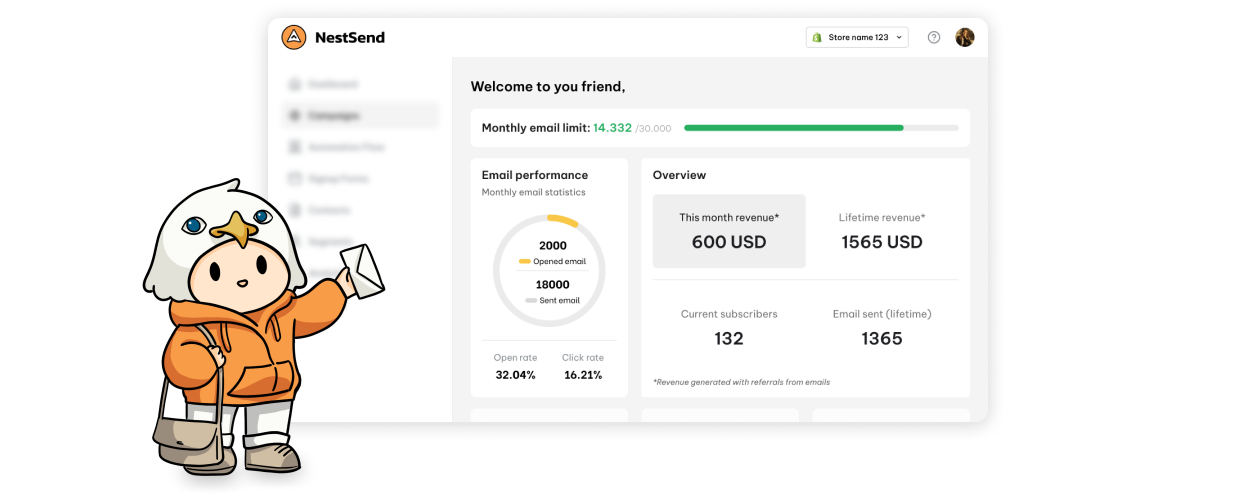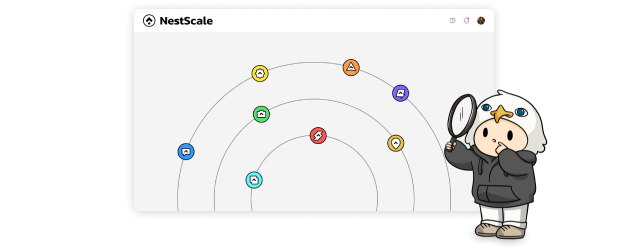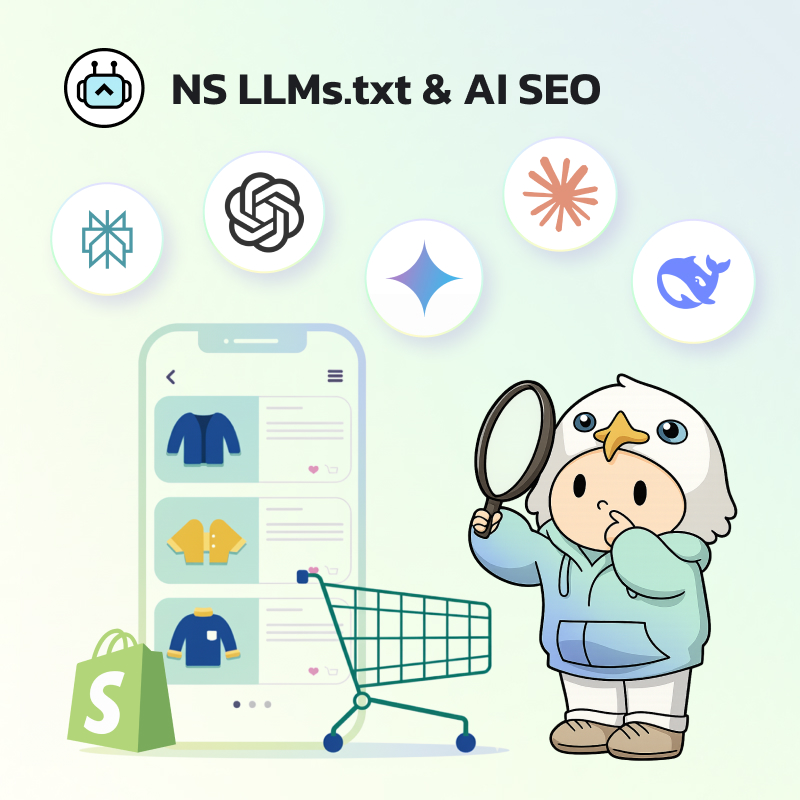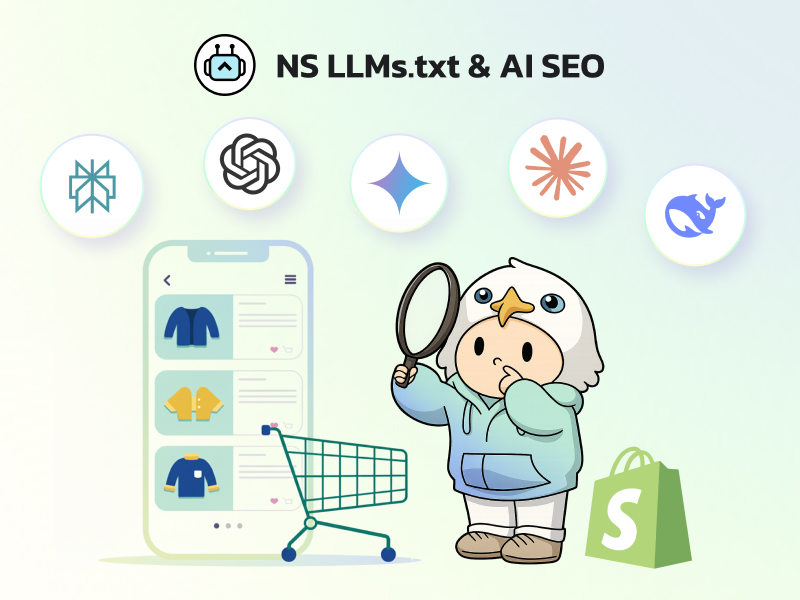Glossary
Success isn’t tied to a single metric. Learn every terms that matter to your business growth: Definitions, examples, and practical tips to apply.
A
A/B Split Testing
A/B split testing is a marketing method that compares two versions of a campaign, webpage, or ad.
Ad Click Through Rate
Ad CTR measures the percentage of viewers who click on an ad and reaveals its effectiveness in engaging audiences.
Ad Impression
An ad impression is counted each time an advertisement is displayed on a user’s screen, regardless of user interaction.
Ad Inventory
Ad inventory is the total ad space available on advertising platforms for banners, videos, and sponsored posts.
Ad Network
An ad network connects advertisers with publishers, matching ads to audiences based on targeting.
Ad Server
An ad server delivers and manages digital ads, ensuring the right ad reaches the right audience on time.
Ad Stacking
Ad stacking is ad fraud where layered ads record impressions, inflating metrics without real interaction.
Ad Tag
An ad tag is a code snippet that directs browsers on where and how to display ads on websites or apps.
Ad Unit
An ad unit is a designated space on a digital platform for displaying ads, defined by format and size.
Adstock Effect
The adstock effect shows how advertising impact lingers over time, extending beyond initial exposure.
Advertising Elasticity
Advertising elasticity measures how changes in ad spending impact sales, revealing ad effectiveness.
Advertising Platform
An advertising platform enables businesses to place targeted ads across digital channels to boost sales.
Advertising to Sales Ratio
The Advertising to Sales Ratio measures ad spend efficiency by comparing it to total sales revenue.
Affiliate Marketing
Affiliate marketing is a simple yet powerful collaboration between businesses and affiliates. The idea is straightforward: businesses reward affiliates for driving traffic sales.
Attribution Conversion Path Analysis
Attribution conversion path analysis is a data-driven method for evaluating the series of touchpoints or interactions a customer engages with.
Attribution Credit
Attribution credit refers to the value assigned to each touchpoint or interaction a customer has with your brand during their journey to conversion
Attribution Modeling
Attribution modeling is the process of assigning credit to touchpoints before completing a sale or conversion.
Attribution Rate
Attribution rate refers to the percentage of credit assigned to a specific marketing touchpoint or channel for driving a desired action.
Attribution Reporting
Attribution reporting is the process of analyzing and visualizing how credit for conversions is distributed across the various touchpoints in a customer’s journey.
Attribution Software
Attribution software is a powerful tool that can help businesses track, analyze, and assign credit to different marketing touchpoints along the customer journey.
Attribution Time Lag
Attribution time lag refers to the delay between when a customer first interacts with your brand and when they ultimately convert
Attribution Vendor
An attribution vendor is a third-party platform or service that helps businesses track, analyze, and assign credit to the various marketing touchpoints.
Attribution Window
An attribution window is the time duration in which a marketing channel or touchpoint can claim credit for influencing a conversion
B
Backlink
Backlinks, also known as inbound links or incoming links, are simply links from one website to another.
Bounce Rate
Bounce rate is a key metric in web analytics that measures the percentage of visitors who land on a webpage and leave without taking any further action, such as clicking on a link, filling out a form, or navigating to another page on the same website.
Brand Lift
Brand lift measures how exposure to a brand’s advertising impacts consumer perception, awareness, and intent, and provides insights into campaigns effectively
Branded Traffic
Branded traffic refers to website visitors who arrive after searching specifically for your brand name, product, or service. For example, a user searching for “NestScale apps” instead of “eCommerce tracking tools” is contributing to branded traffic.
C
Click Fraud
Click fraud is a fraudulent practice where fake or invalid clicks are intentionally generated on digital ads, typically in PPC or CPC campaigns.
Click Redirection
Click redirection is the process of sending a user to a different webpage than the one they initially clicked on.
Click-Through Rate
CTR is a crucial metric in digital marketing that measures the effectiveness of online campaigns in driving user engagement.
Cohort Analysis
Cohort analysis is essential for tracking and understanding customer behavior trends, and identifying valuable customer groups to focus on for retention.
Controlled Experiment
A controlled experiment involves comparing two or more groups that are identical in every way except for one factor. This is the variable we manipulate to see it's effect.
Conversion Lift
Conversion lift is a marketing measurement method that measures the incremental impact of an ad campaign on driving conversions.
Cookie
A cookie, in the context of the internet, is a small text file that a website stores on your device (computer, smartphone, or tablet) when you visit it.
Cost Models
Cost models are mathematical equations used to estimate and analyze the costs associated with running a business. In e-commerce, these models encompass a wide array of expenses, including production, marketing, distribution, and administration.
Cost Per Action
Cost Per Action (CPA) measures the cost of each user action, like a purchase, sign-up, or lead.
Cost Per Click
Cost Per Click (CPC) measures how much you pay per ad click on platforms like Google, Facebook, and TikTok.
Cost Per Completed View
Cost Per Completed View (CPCV) measures how much you pay only when a viewer watches your entire video ad.
Cost Per Engagement
Cost Per Engagement (CPE) is a pricing model where advertisers pay only when users actively interact with an ad.
Cost Per Lead
Cost Per Lead (CPL) measures the cost of acquiring a lead, such as an email subscriber or sign-up.
Cost Per Mille
Cost Per Mille (CPM) is an ad pricing model where advertisers pay per 1,000 impressions.
Cost Per Order
Cost Per Order (CPO) measures the cost of generating a single order through various marketing efforts.
Cost Per Session
Cost Per Session (CPS) measures the cost of acquiring a single website visitor through paid marketing efforts.
Cost Per View
Cost Per View (CPV) is a pricing model where advertisers pay when a user watches a portion of a video ad or interacts with it.
Cost Per Visit
Cost Per Visit (CPV) measures the cost of attracting one visitor to a website or store.
Cross-Device Tracking
Cross-device tracking is the process of identifying and following users as they switch between devices, such as smartphones, tablets, desktops, and even connected TVs
D
Demand Side Platform
A Demand Side Platform (DSP) automates ad buying, optimizing placements across websites, apps, and videos.
Dynamic Product Ads
A Dynamic Product Ad (DPA) automatically displays relevant products to users based on their behavior.
E
Earnings Per Click
Earnings Per Click (EPC) measures the average revenue earned per click from affiliates, ads, or campaigns.
G
Geo Testing
A geo test measures ad impact by targeting specific regions, helping businesses assess campaign effectiveness.
I
Incremental Conversions
An incremental conversion is an action driven by marketing efforts, not one that would happen organically.
Incremental Sales Lift
Incremental sales lift shows the extra revenue from a marketing activity, isolating its direct impact on sales.
Incrementality Measurement
Incrementality measures the impact of marketing efforts, distinguishing between natural outcomes and those driven by campaigns.
K
Keyword Ranking
Keyword ranking refers to the position of a website or webpage in search engine results (like Google) for specific search queries or keywords.
M
Marketing Analytics
Marketing analytics refers to the process of measuring, managing, and analyzing marketing performance data to maximize ROI, improve campaign effectiveness, and understand customer behavior.
Marketing Automation
Marketing automation uses software to automate tasks, streamline workflows, and personalize interactions.
Marketing Efficiency Ratio
Marketing Efficiency Ratio (MER) compares revenue to marketing expenses to assess campaign effectiveness.
Marketing Experimentation
Marketing experimentation tests and analyzes different strategies to identify what works best for achieving business goals.
Marketing Mix Modeling
Marketing Mix Modeling (MMM) is a statistical analysis technique that helps businesses understand the effectiveness of their marketing efforts across multiple channels,
N
New Customer Acquisition Cost
New Customer Acquisition Cost (CAC) tracks the cost of acquiring a first-time customer through marketing and sales.
O
Offline Attribution
Offline attribution links offline actions to online campaigns, measuring their true impact.
Online Behavioral Advertising
Online Behavioral Advertising uses user data to display personalized ads, driving engagement and sales.
Organic Impressions
Organic impressions are views of your content in search results or feeds without paid promotion.
Organic Reach
Organic reach is the number of unique users who see your content naturally, without paid promotion.
Organic Search Traffic
Organic search traffic refers to visitors from unpaid search results, driven by SEO efforts.
Organic Visibility
Organic visibility shows how often your site appears in unpaid search results, attracting free traffic.
Owned Media
Owned media are brand-controlled digital platforms for direct audience communication without paid ads.
P
Pages Per Session
Pages per session measures the average number of pages a visitor views in a single visit before exiting.
Pay Per Click (PPC)
Pay-per-click (PPC) is a digital advertising model where advertisers pay a fee each time their ad is clicked.
S
S2S Tracking
Server-to-Server (S2S) tracking transfers data between servers, bypassing cookies for more accurate tracking.
Supply Side Platform
A Supply-Side Platform (SSP) is a tool that helps digital publishers sell their advertising space automatically.
T
Test and Control Methodology
Test and control methodology compares outcomes between test and control groups to measure the impact of marketing strategies.
Time Series Forecasting
Time series forecasting uses historical data and patterns like trends to predict future outcomes.
Touchpoint Analysis
Touchpoint analysis identifies and optimizes customer interactions with a brand, shaping their overall experience and journey.
Tracking Parameters
Tracking parameters are URL tags that capture user data, helping businesses track traffic sources and enhance attribution and analytics.
Tracking Pixel
A tracking pixel, also known as a web beacon or pixel tag, is a 1x1 transparent image or code snippet embedded in websites or emails
Traffic from Paid Channels
Traffic from paid channels refers to the visitors who arrive at your website through advertisements that you have paid for
Treatment Group
In e-commerce, a treatment group refers to a subset of customers who are exposed to specific changes or interventions during an A/B or multivariate testing scenario.
U
User Tracking
User tracking refers to the process of collecting and analyzing data about how users interact with websites, mobile applications, or digital platforms.
V
View-Through Attribution
View-through attribution (VTA) is a marketing measurement model that attributes conversions to ad impressions, even if the user didn’t directly interact with (click on) the ad.
W
Web Attribution
Web attribution is the process of identifying and assigning credit to the various online interactions that contribute to a desired conversion, such as a purchase, app installation, or email signup.
Ready to unlock your business growth today?
Accelerate your growth with a purpose-built app ecosystem for brands and agencies.





